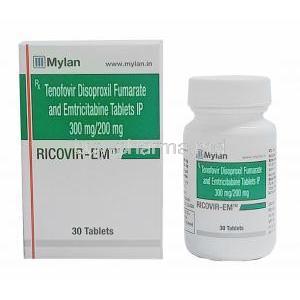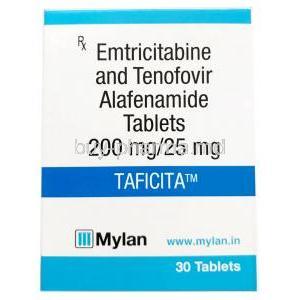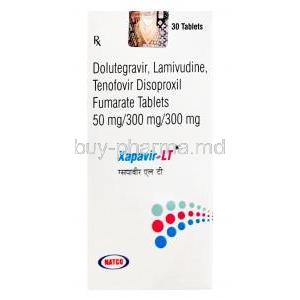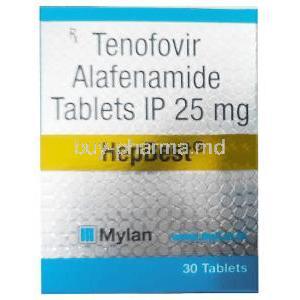Truvada
Introduction to Truvada
Truvada represents an advancement in the field of medical research especially in the area of treating HIV/AIDS. This piece aims to shed light on aspects of Truvada, from its origins to its diverse applications, in modern healthcare.
Overview of Truvada
Truvada, an antiretroviral drug, is recognized for its effectiveness in fighting Human Immunodeficiency Virus (HIV). It contains a blend of two powerful medications, tenofovir disoproxil fumarate, and emtricitabine, that collaborate to hinder virus reproduction in the human body.
History of Truvada
Truvadas history dates back, to when it was approved by the U.S. Food and Drug Administration (FDA) in 2004. Originally intended for treating HIV its usage evolved to include HIV prevention using exposure prophylaxis (PrEP).
Importance of Truvada in Medical Treatment
Truvada goes beyond being a new drug; it represents a ray of hope for people vulnerable to HIV and those already living with the virus. Its introduction has transformed the way we approach HIV care, providing a support system for many people around the globe.
Uses of Truvada
Truvada plays a role as a versatile treatment option for addressing a range of medical requirements linked to HIV/AIDS. The approved and alternative applications of Truvada highlight its role in contemporary healthcare practices.
FDA-approved Uses
-
Prevention of HIV Prior to Exposure (PrEP):
- Pre-exposure prophylaxis (PrEP) is a medicine taken to prevent getting HIV. When taken as prescribed, PrEP is highly effective for preventing HIV. It reduces the risk of getting HIV from sex by about 99% and from injection drug use by at least 74%. Condom use is still important for protection against other STDs, as PrEP only protects against HIV. Resources and information on PrEP are available from the Centers for Disease Control and Prevention (CDC)1.
-
Treatment for HIV (Truvada):
- Truvada (emtricitabine and tenofovir) is used in combination with antiretroviral therapy (ART) for people living with HIV. It helps manage the disease by controlling viral replication and extending patient life expectancy. Truvada is also prescribed for pre-exposure prophylaxis (PrEP) to reduce the chances of HIV infection among those at risk. PrEP refers to taking Truvada regularly to prevent HIV infection23.
Off-label Uses
Preventing the Spread of HIV in High-Risk Groups Beyond Truvada’s Official Approval:
- Truvada (emtricitabine and tenofovir) is officially approved for pre-exposure prophylaxis (PrEP) to prevent HIV infection. However, its impact extends beyond traditional prevention methods. Truvada can help reduce transmission in situations where other preventive measures may not be sufficient. It is essential to recognize that PrEP with Truvada is a valuable tool in the fight against HIV, especially for high-risk groups1.
How Truvada Works
Understanding how well Truvada works involves exploring how it works, its effects on the body, and its importance in preventing and treating HIV.

Mechanism of Action
Truvada works to stop the spread of HIV by blocking the function of HIV reverse transcriptase, an enzyme that allows the virus to multiply. The combination of tenofovir disoproxil fumarate and emtricitabine in Truvada slows down the production of viral DNA, ultimately preventing the advancement of HIV infection.
Pharmacokinetics
When you take Truvada by mouth, it is quickly absorbed, reaching peak levels in the bloodstream within an hour. Both tenofovir disoproxil fumarate. Emtricitabine has good bioavailability, allowing them to work effectively against HIV at specific locations in the body.
Efficacy in HIV Prevention and Treatment
Truvadas effectiveness in preventing HIV relies on the need to follow the dosing schedules to ensure steady levels in the bloodstream. When it comes to treating HIV, incorporating Truvada into ART routines has led to results promoting viral suppression and boosting immune recovery.
Dosage and Administration
Achieving the results with Truvada relies on sticking to the recommended dosing schedules and carefully following the instructions for administration.
Recommended Dosage for PrEP
To effectively prevent HIV, it is crucial to take one tablet that includes tenofovir disoproxil fumarate (300 mg) and emtricitabine (200 mg). Consistently following this routine is essential to ensure protection against acquiring HIV.
Recommended Dosage for HIV Treatment
When treating HIV, Truvada is usually included in a mix of medications called combination ART regimens. The usual dose is once a day, along with antiretroviral drugs. Adjusting the dosage might be needed depending on factors of the patient and how they respond to treatment.
Administration Instructions
- Take Truvada at a time every day to keep the drug levels steady and ensure it works effectively. You can take Truvada with or without food giving you some flexibility in your dosing routine.
- Be aware that eating high-fat meals along with it might slow down how quickly your body absorbs the drug.
- If you forget to take a dose, try to take it as soon as you remember unless it's almost time for your next dose. Avoid taking doses to make up for missed ones.
Composition of Truvada
Truvada is a crafted blend of active components and additives guaranteeing effective delivery of the drug and maximum therapeutic benefits.
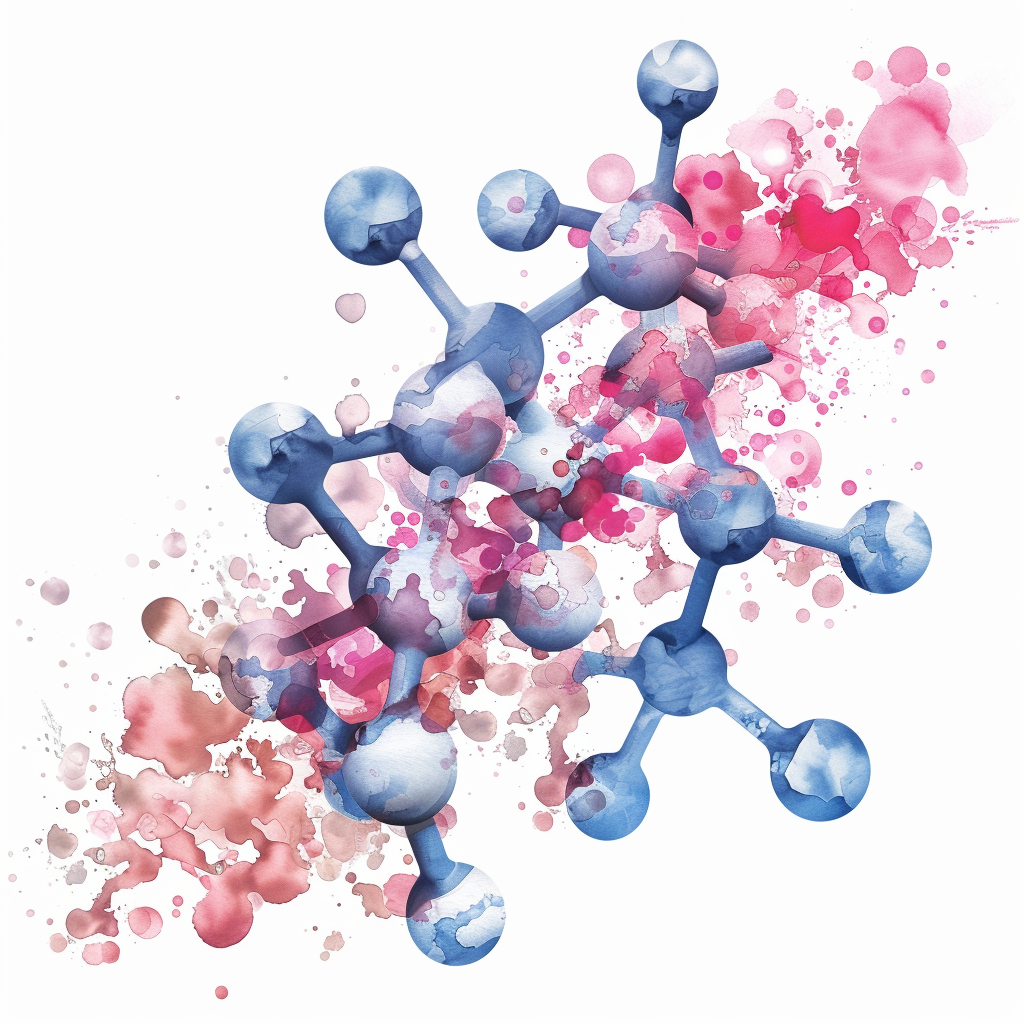
Active Ingredients
Truvada consists of two components: tenofovir disoproxil fumarate, which is a form of tenofovir, and emtricitabine, an NRTI. These active ingredients work together to block the replication of viruses, helping to reduce the impact of HIV related illnesses and deaths.
Excipients
Truvada contains additional substances, such as microcrystalline cellulose, croscarmellose sodium, magnesium stearate, and lactose monohydrate, that work together to improve the tablet's ability to dissolve and how well the body can absorb it.
Formulation
Truvada comes in the form of tablets that you take by mouth. Each tablet has 300 mg of tenofovir disoproxil fumarate and 200 mg of emtricitabine. This way of taking the medication makes it easy to use. It also helps make sure you get the right amount of medicine each time, which helps with following your treatment plan and getting good results.
Storage Guidelines for Truvada
Proper storage of Truvada is crucial to ensure that it remains stable, intact, and effective for a period.
Proper Storage Conditions
Make sure to keep Truvada tablets at room temperature (20 25°C) away, from direct sunlight and heat sources. Extreme temperatures or humidity can affect the effectiveness and stability of the medication.
Shelf Life
The expiration date of Truvada tablets is usually indicated on the packaging. It should be followed carefully. Any expired medications should be disposed of properly following the recommended guidelines.
Packaging Information
Truvada pills are usually given in blister packs or sealed packaging to protect them from influences and microbial pollution. The tamper-evident packaging helps maintain the quality of the product and ensures safety.
Interactions with Other Medications
The unique characteristics of Truvada require evaluation of possible interactions with other drugs, food items, and dietary supplements.
Drug-Drug Interactions
Truvada can potentially have interactions with types of medications such as:
- antiretroviral agents,
- antifungal agents,
- anticonvulsants and
- proton pump inhibitors.
Drug-Food Interactions
Some foods and ingredients in your diet could affect how Truvada works in your body.
- Important factors to keep in mind are meals high in fat, grapefruit juice, and drinking alcohol.
Drug-Supplement Interactions
When taking Truvada, it's important to consider any dietary supplements, herbal remedies, or over-the-counter medications you may be using to prevent any unwanted interactions or negative effects.
Side Effects of Truvada
Truvada is usually well tolerated. It can cause a variety of side effects that vary in severity from mild, to severe.
Common Side Effects
- Gastrointestinal Issues; Nausea, diarrhea and stomach discomfort are some of the digestive problems linked to Truvada.
- Headaches; Headaches are often mentioned as a side effect usually fleeting and not severe.
- Feeling Dizzy; Some people might feel dizzy or light headed when starting treatment.
Serious Side Effects
- Long term use of Truvada could lead to kidney problems so it's important to check kidney function.
- Truvada has been linked to bone density, which may increase the risk of osteoporosis and fractures.
- In cases some people using Truvada have experienced liver issues like elevated liver enzymes and liver dysfunction.
Promptly recognizing and addressing these side effects is crucial for safety and treatment compliance.
Warnings and Precautions
Prior to starting Truvada treatment, it's crucial to take into account cautions and safety measures to ensure the best possible outcomes for the patient.
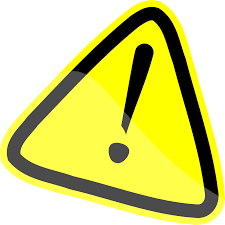
Boxed Warnings
Truvada comes with important warnings known as boxed warnings. These alerts highlight risks associated with its use:
1. Risk of Acidosis: Truvada usage can increase the risk of lactic acidosis, a rare but potentially life-threatening metabolic complication characterized by high levels of lactate in the bloodstream. Healthcare providers should be cautious when prescribing Truvada to individuals who have underlying risk factors for acidosis, such as renal impairment or liver dysfunction.
2. Exacerbation of Hepatitis B: Suddenly stopping Truvada in individuals who are co-infected with HIV and hepatitis B virus (HBV) could lead to a severe acute exacerbation of HBV infection, requiring close monitoring and appropriate management strategies.
Contraindications
Truvada treatment should not be used in medical situations where it could cause more harm or worsen existing health conditions:
1. Allergic Reactions: If someone has had allergies or reactions to any part of Truvada before, they should avoid using it to prevent allergic reactions, such as anaphylaxis.
2. Kidney Issues: Truvada should not be used in patients with kidney problems (creatinine clearance <30 mL/min) because it can build up in the body and harm the kidneys.
3. Avoid Mixing with Tenofovir-containing Products: Using Truvada at the same time as other medications containing tenofovir is not recommended as it can increase exposure to tenofovir and raise the risk of kidney damage.
Special Populations
Certain patient groups require attention leading to personalized approaches, for Truvada treatment.
Elderly Patients
Elderly individuals might show changes in how their bodies process medications and be more prone to experiencing reactions. This calls for adjustment of dosages and close monitoring.
- For instance age related declines in kidney function could require dosage changes to prevent drug buildup and kidney issues.
- Additionally, existing health conditions like heart disease or osteoporosis, often seen in adults, can affect treatment choices and require careful observation for any harmful effects.
Pregnant Women and Nursing Mothers
During pregnancy and breastfeeding, it is important to consider the risks and benefits of using Truvada.
- For women, Truvada can be used for HIV treatment or preventing mother-to-child transmission, but regular monitoring is crucial to ensure the best outcomes for both mother and baby.
- When it comes to breastfeeding, Truvada is passed through breast milk, so healthcare providers need to evaluate whether the benefits of breastfeeding outweigh the risks of HIV transmission and drug exposure for the infant.
Pediatric Patients
Using Truvada in children requires adjustment of doses and monitoring for safety and effectiveness.
- Dosage Based on Weight: The amount of Truvada given to children is calculated according to their body weight with adjustments made based on age, kidney function, and the reason for treatment.
- Monitoring Growth and Development: monitoring of growth, bone health, and kidney function is essential when children use Truvada long-term to prevent any negative impact on their development.
Overdosage and Handling Precautions
While rare, cases of Truvada overdose necessitate prompt recognition and appropriate management to minimize potential adverse consequences.
Symptoms of Overdosage
Symptoms of taking much Truvada can include stomach issues like nausea, vomiting, and diarrhea, as well as headaches, dizziness, and confusion. In some cases, it can also lead to kidney problems such as acute kidney injury or renal failure. If someone shows any of these signs, it's important for them to seek medical help to prevent any potential complications.
Management of Overdose
When someone takes much Truvada, the usual approach involves providing support to address symptoms and prevent any issues:
1. Gastric Lavage: If the overdose happened recently, doctors might consider doing lavage to get rid of any leftover drug in the stomach.
2. Symptomatic Treatment: Patients may receive care like fluids and electrolytes to manage stomach issues and keep their kidneys working properly.
3. Renal Monitoring: It's important to watch kidney function in people who have overdosed on Truvada so that any kidney problems can be detected and treated promptly.
Handling and Disposal Precautions for Healthcare Providers
Healthcare professionals must follow precautions when handling and disposing of Truvada to reduce the chances of accidental exposure and environmental contamination.
- This includes wearing protective clothing, like gloves and eye protection, when dealing with Truvada tablets or administering medication.
- Unused or expired Truvada tablets should be disposed of following hazardous waste disposal guidelines to minimize harm to the environment and others.
- Additionally, healthcare providers should educate patients on how to store and dispose of medication correctly to prevent exposure or misuse.


